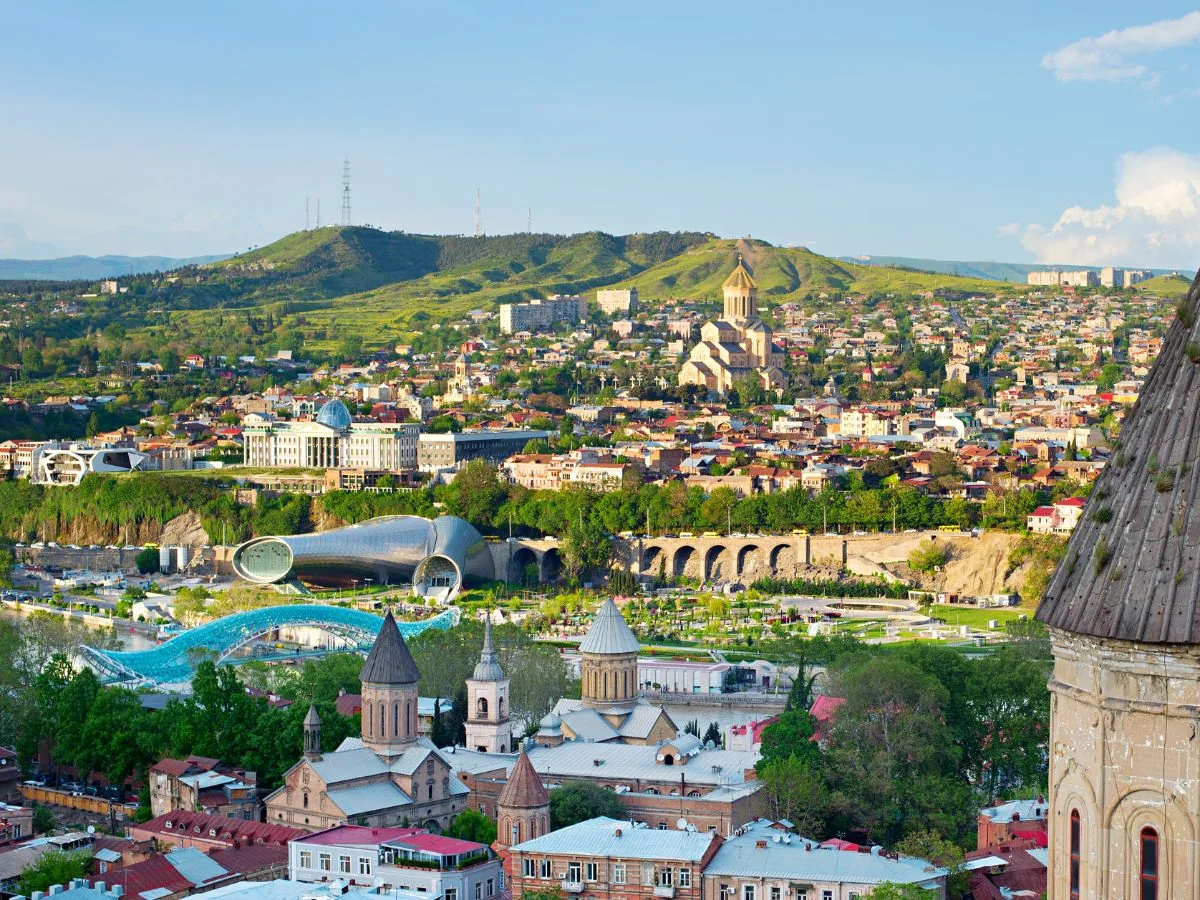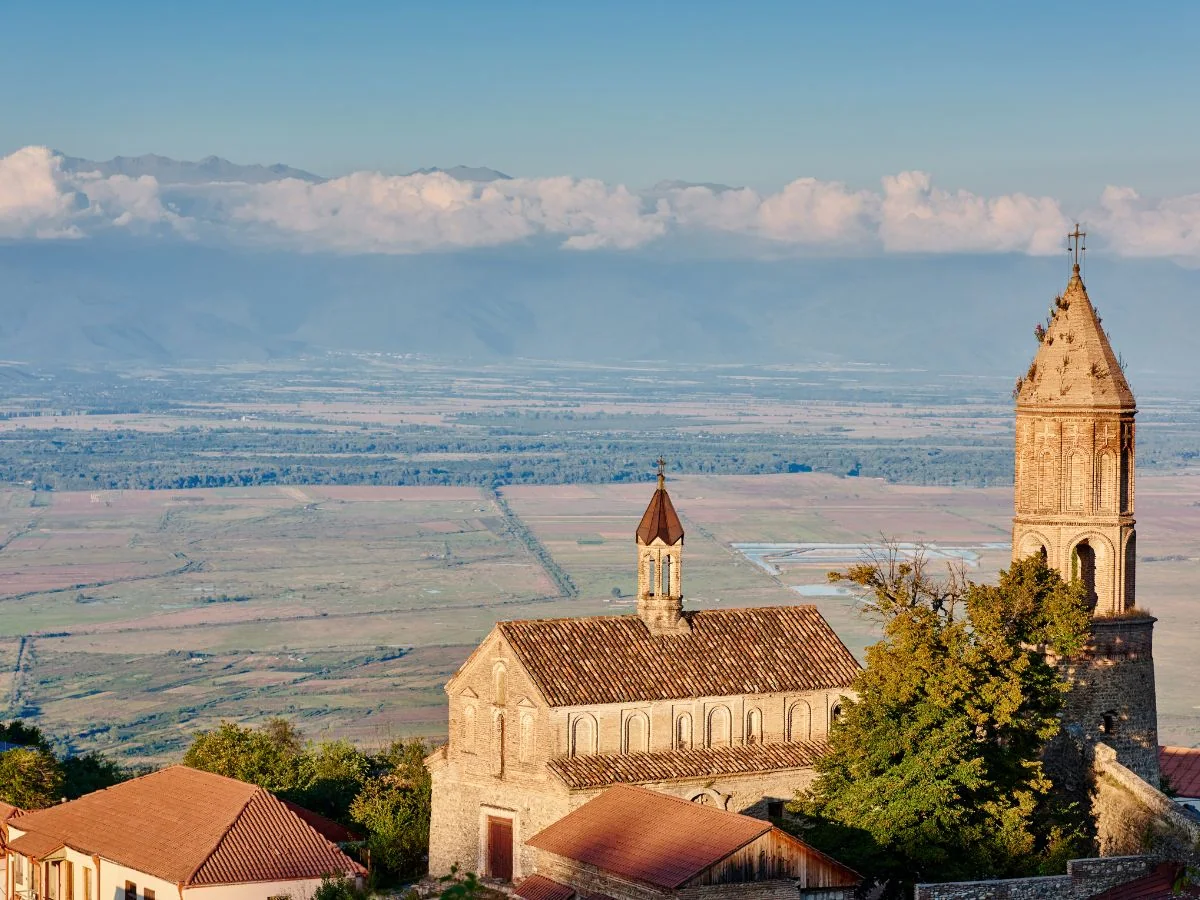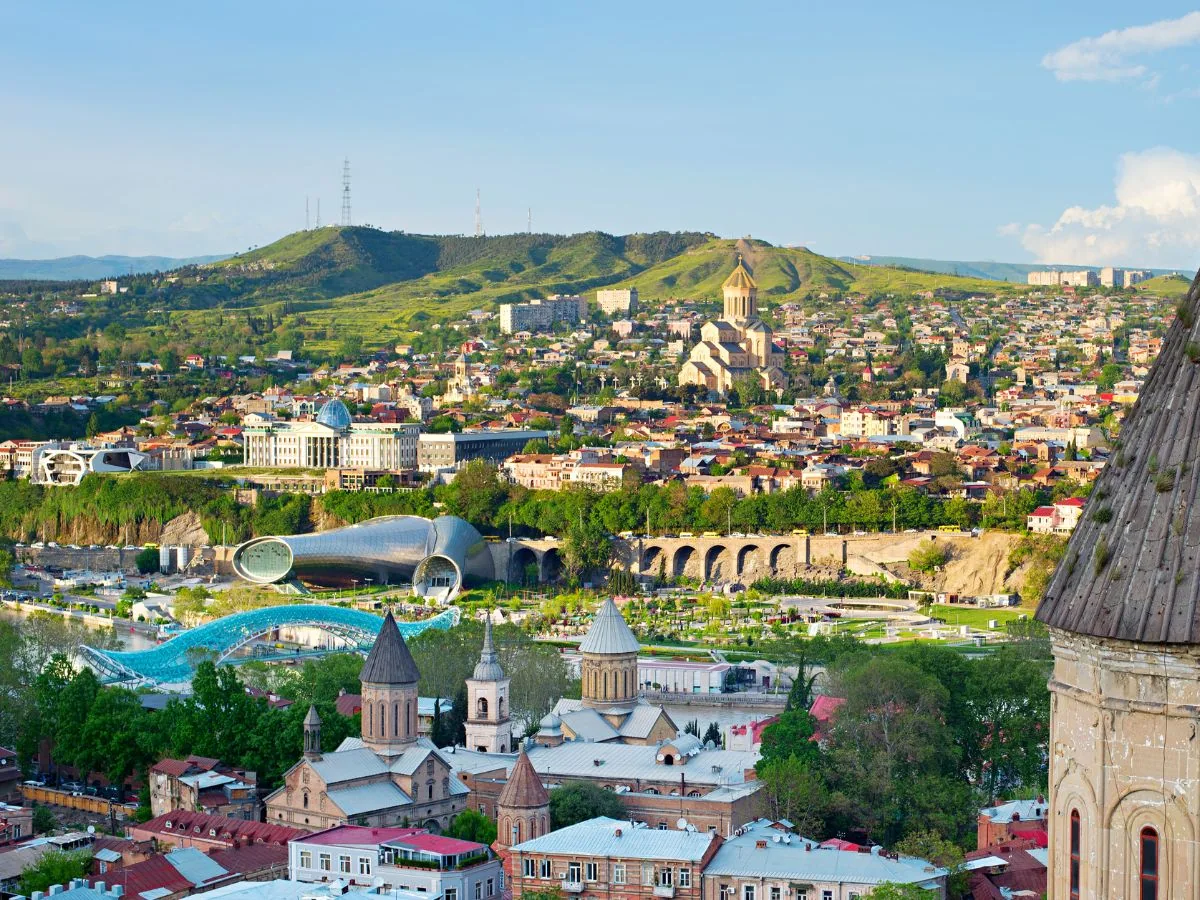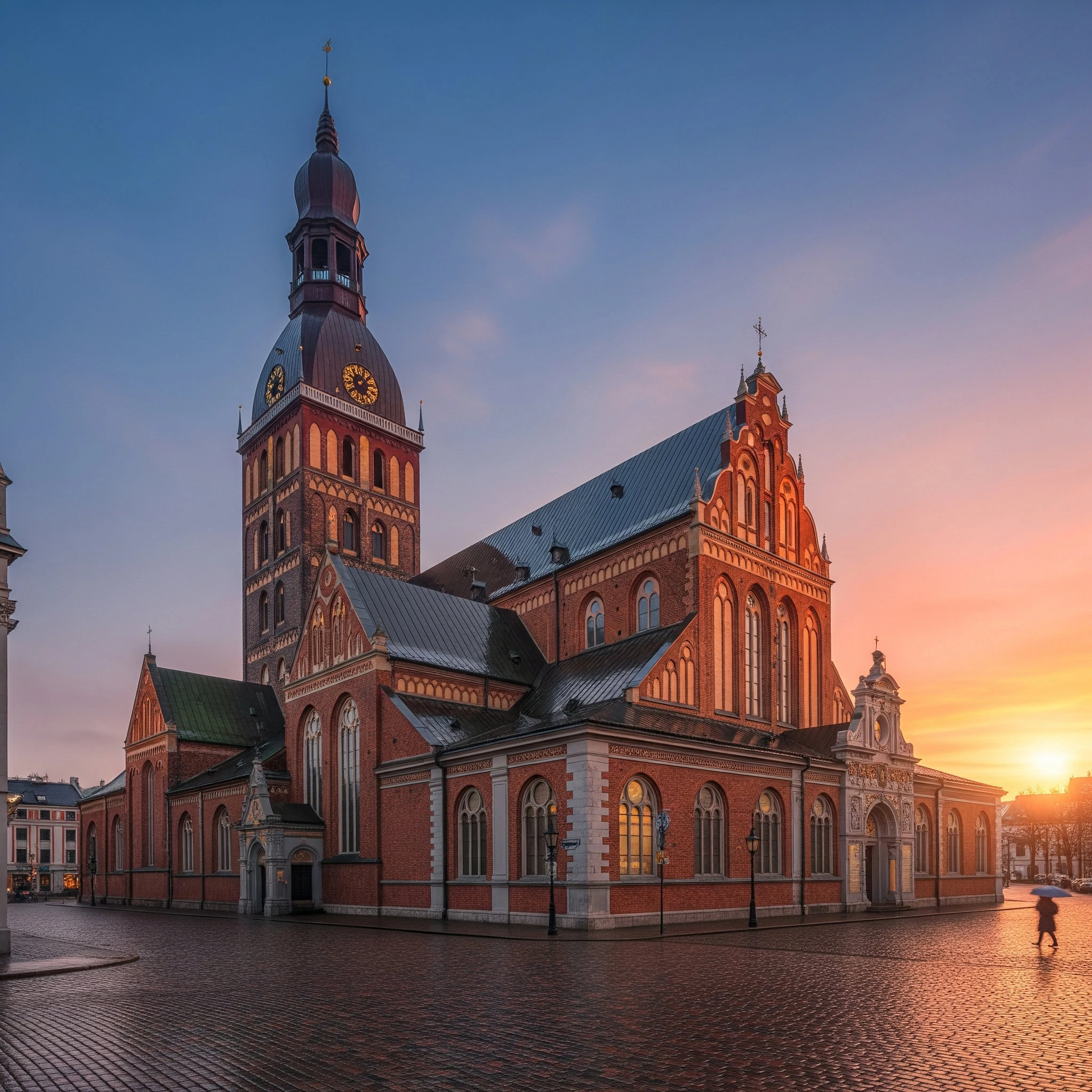Picture this: you’re standing in a cool, dimly lit cellar in the heart of Georgia’s Kakheti region, watching a winemaker carefully tend to massive clay vessels buried deep in the earth. These qvevri, as they’re called, have been nurturing wine in exactly this way for eight thousand years. Archaeological evidence supports Georgia’s claim as the birthplace of wine, with discoveries dating back millennia. The air is thick with history, and every sip you take connects you to humanity’s oldest winemaking tradition.
The Republic of Georgia isn’t just another wine destination—it’s the birthplace of wine itself. Here, amongst rolling hills dotted with ancient monasteries and family vineyards, you’ll discover stories that have been passed down through generations of passionate winemakers. The Black Sea plays a crucial role in shaping the region’s climate and winemaking tradition. In the country’s east, the Kakheti region stands out as a prominent wine-producing area. This isn’t about quick tastings or rushed tours. It’s about slow travel, deep connections, and understanding why Georgian wine culture has survived invasions, occupations, and countless challenges.
The Ancient Art of Georgian Winemaking
8,000 Years of Wine Heritage
Archaeological evidence in Georgia has revealed the world’s oldest proof of wine production, dating back to 6000 BCE. In the village of Gadachrili Gora, researchers found residue from fermented grapes in pottery shards, proving that Georgians were crafting wine when much of the world was still figuring out basic agriculture. This isn’t just a claim—it’s scientific fact that places Georgia firmly at the centre of wine’s origin story.
UNESCO recognised Georgian winemaking traditions as an Intangible Cultural Heritage of Humanity in 2013, acknowledging what locals have always known: their wine culture is irreplaceable. Unlike many wine regions where commercial interests have gradually replaced traditional methods, Georgia has maintained its ancient techniques alongside modern innovations. This preservation wasn’t accidental—it was a conscious choice made by generations of Georgian families who understood they were guardians of something precious.
The Georgian people’s relationship with wine runs deeper than mere tradition. During Soviet occupation, when authorities tried to replace Georgian wines with industrial alternatives, families secretly maintained their qvevri and continued making wine in hidden cellars. They risked imprisonment to preserve their heritage, demonstrating that Georgian wine culture isn’t just about grape varieties or fermentation methods—it’s about identity, resistance, and the unbreakable human spirit.
The Sacred Qvevri Method
The qvevri method represents one of the world’s most sophisticated yet simple winemaking techniques. These massive clay vessels, some holding over 1,000 litres, are crafted by hand using local clay and buried up to their necks in the earth. Qvevri are traditional clay jars used in Georgian winemaking, highlighting the ancient, handcrafted approach that defines the region’s viticulture. The natural insulation maintains perfect fermentation temperatures without any modern intervention, creating wines with unique mineral characteristics impossible to replicate using contemporary methods.
What makes qvevri fermentation truly special is its completeness. Unlike modern winemaking, where grape skins are removed early in the process, qvevri wines ferment with their skins for months. This extended contact creates wines with remarkable depth, complexity, and natural tannins that develop beautifully over time. The clay vessels themselves contribute subtle mineral notes that reflect the specific soil where they’re buried.
The burial process requires considerable skill and knowledge passed down through generations. The depth, drainage, and positioning of each qvevri affects the wine’s final character. Master winemakers can taste a wine and identify not just which vineyard it came from, but often which specific qvevri was used in its creation. This level of terroir expression is what makes Georgian wines so distinctive and why wine enthusiasts worldwide are rediscovering these ancient treasures.
Kakheti – The Heart of Georgian Wine Country
Discovering Kakheti’s Landscape
Kakheti stretches across eastern Georgia like a tapestry woven from vineyards, mountains, and medieval fortresses. The region benefits from a continental climate with warm summers and mild winters, perfect for the slow ripening that creates Georgia’s distinctive wines. The Caucasus Mountains provide natural protection from harsh northern winds, while the Alazani River valley creates ideal growing conditions for both indigenous and international grape varieties. The Alazani River Plain, where towns like Gurjaani are located, is a significant geographic feature that shapes the region’s landscape and supports its renowned wine industry.
Travelling through Kakheti by rail offers perspectives impossible to achieve by road, especially for those interested in wine tastings in Georgia’s Kakheti region, where each stop brings you closer to centuries-old traditions and unforgettable flavors. The Vashlovani protected area, known for its semi-desert vegetation and steppe, is also home to unique mud volcanoes, adding to the region’s diverse natural attractions. During autumn, the entire region transforms into a painter’s palette of gold, crimson, and amber, making it one of Europe’s most spectacular wine destinations.
The best time to visit Kakheti depends on what you want to experience. Spring brings wildflowers and the excitement of new growth, while summer offers long days perfect for vineyard exploration. However, autumn harvest season from September to October provides the most magical experience, when entire communities come together to celebrate another year’s bounty with traditional songs, feasts, and, of course, plenty of wine.
Historic Wine Regions Within Kakheti
Tsinandali represents the aristocratic face of Georgian wine. This historic estate, once owned by the noble Chavchavadze family, pioneered the European-style approach to Georgian winemaking in the 19th century. Today, Tsinandali produces elegant white wines that perfectly balance traditional Georgian character with refined complexity. The estate’s English-style gardens and historic cellars offer visitors a glimpse into how Georgian nobility lived and entertained, often hosting famous writers and musicians from across Europe.
Chateau Zegaani, established in 1820, is another historical heritage estate in Kakheti. Renowned for its all-natural wines, Chateau Zegaani offers vineyard tours, wine tastings, and showcases impressive architecture, making it a notable destination for wine tourism and those interested in the region’s rich winemaking traditions.
Mukuzani, nestled in the fo
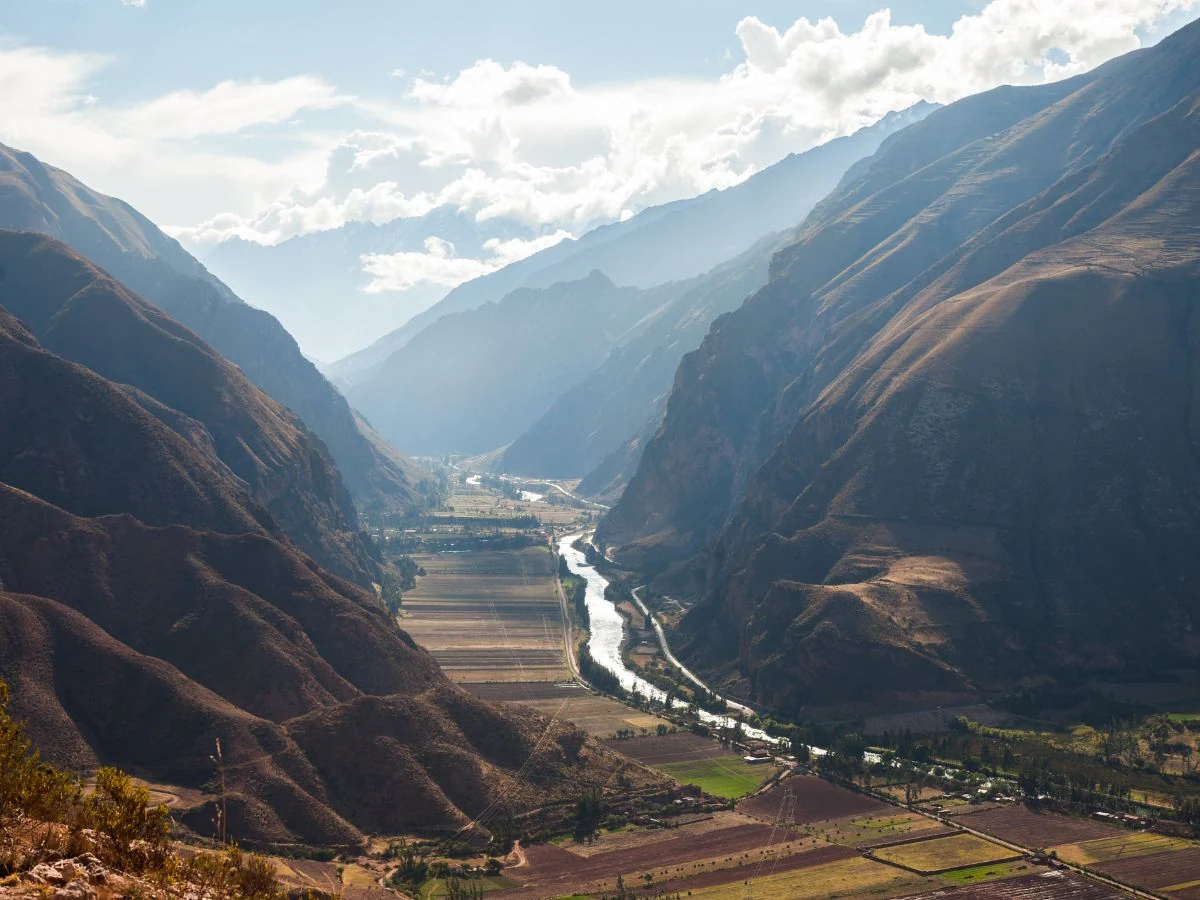
foothills of the Caucasus, specialises in bold red wines that reflect the region’s mountainous terroir. The higher altitude and cooler temperatures create wines with exceptional structure and aging potential. Mukuzani reds are known for their deep colour, complex aromatics, and ability to pair beautifully with Georgia’s hearty mountain cuisine. The region’s winemakers take immense pride in their craft, often involving visitors in traditional harvest activities and sharing stories passed down through generations.
Kindzmarauli holds a special place in Georgian wine history as the region that produced wines for Russian tsars. The microclimate here creates perfect conditions for late-harvest wines with natural sweetness and remarkable complexity. Kindzmarauli wines were once so prized that they were served at imperial banquets in St. Petersburg, and today they continue to represent the pinnacle of Georgian winemaking artistry.
The Alazani Valley: Georgia’s Scenic Wine Corridor
Nestled in the heart of the Kakheti wine region, the Alazani Valley is a breathtaking corridor where the story of Georgian wines unfolds against a backdrop of rolling vineyards and sun-drenched hills. This fertile valley, renowned for its unique microclimate of mild winters and warm, generous summers, is the lifeblood of wine production in eastern Georgia. Here, the art of cultivating grapes is both a daily ritual and a centuries-old tradition, with generations of winemakers tending to their vineyards as their ancestors did.
As you journey through the Alazani Valley, you’ll discover a vibrant tapestry of wine bars and traditional wine cellars, each offering a taste of the region’s celebrated wines. From the golden hues of amber wines to the intriguing complexity of orange wines, the valley’s offerings are as diverse as its landscape. Whether you’re sampling a crisp Kakheti wine in a rustic cellar or savoring a glass of qvevri-aged wine at a modern wine bar, every sip is a testament to the valley’s rich heritage and the passion of its people.
The Alazani Valley is more than just a destination—it’s the heart of Georgia’s wine region, where the connection between land, grape, and culture is celebrated in every bottle. For wine lovers and curious travelers alike, this scenic corridor promises an unforgettable journey through the flavors and stories that define Georgian wines.
Vineyards Along the Riverbanks
Winding its way through the valley, the Alazani River nourishes a patchwork of vineyards that stretch as far as the eye can see. Along its gentle banks, rows of grape vines thrive in the fertile soil, their leaves shimmering in the sunlight as local winemakers practice time-honored wine making techniques. Here, tradition is alive in every step—from hand-harvesting grapes to fermenting them in ancient clay vessels.
Visitors are invited to stroll along the riverbanks, where the air is fragrant with the scent of ripening grapes and the promise of the next vintage. Many family-run vineyards open their doors for intimate wine tastings, offering a chance to sample some of the region’s finest Georgian red wines and signature Kakheti wine. Each tasting is an opportunity to experience the depth and character that traditional methods bring to every glass, and to learn firsthand how the unique terroir of the Alazani River shapes the wines of this celebrated region.
Panoramic Views and Photographic Moments
The Alazani Valley is a feast for the senses, offering panoramic views that linger in memory long after your visit. With the majestic Caucasus Mountains rising in the distance, the valley’s landscape is a patchwork of vineyards, walled villages, and ancient cave monasteries carved into the hillsides. Every turn reveals a new vista—golden fields, lush grapevines, and the timeless beauty of Georgia’s wine country.
Photographers and travelers alike are drawn to iconic sites such as the recently renovated Tsinandali Estate, where manicured gardens and historic wine cellars overlook the valley’s rolling expanse. The interplay of light and shadow across the vineyards, the silhouette of a monastery at sunset, and the vibrant colors of harvest season all create unforgettable photographic moments. Whether you’re capturing the grandeur of the landscape or simply soaking in the view with a glass of wine in hand, the Alazani Valley is the perfect setting to experience the soul of Georgia’s wine country.
Georgian Grape Varietals You Must Try
Indigenous White Grapes
Rkatsiteli stands as Georgia’s most important white grape variety, capable of producing everything from crisp, mineral-driven whites to complex amber wines fermented in qvevri. These amber wines are also known as ‘orange wine,’ a term used for skin-contact white wines that develop a deep color and unique flavor profile. This ancient variety adapts beautifully to different winemaking styles, including aging in oak barrels as well as traditional qvevri, while maintaining its distinctive character. When made in qvevri, Rkatsiteli develops incredible complexity with notes of dried fruits, honey, and distinctive tannins that challenge conventional ideas about white wine.
Mtsvane, meaning “green” in Georgian, produces some of the country’s most elegant white wines. This variety excels in cooler microclimates, creating wines with delicate floral aromatics and crisp acidity. Mtsvane wines often display subtle mineral characteristics that reflect their specific terroir, making them perfect companions to Georgian cuisine’s lighter dishes and fresh cheeses.
Kisi represents one of Georgia’s most ancient grape varieties, mentioned in historical documents dating back over a thousand years. Nearly extinct by the 1980s, dedicated winemakers have revived this remarkable variety, which produces wines with extraordinary aromatics and natural acidity. Kisi wines often display complex spice notes and have the structure to age gracefully for decades.
Distinctive Red Varietals
Saperavi reigns as Georgia’s noble red grape, capable of producing wines ranging from fresh and fruity to deeply complex and age-worthy. This variety’s thick skin creates wines with impressive colour and tannin structure, while its natural acidity ensures excellent aging potential. Saperavi wines often develop leather, spice, and dark fruit characteristics that make them ideal partners for Georgia’s robust cuisine. Notably, Saperavi and other Georgian red wines have achieved significant recognition in international competitions, further establishing Georgia’s reputation on the global wine stage.
Tavkveri offers a completely different expression of Georgian red wine, producing lighter, more elegant wines with bright acidity and subtle fruit characteristics. This variety thrives in specific microclimates within Kakheti, creating wines that showcase finesse over power. Tavkveri wines are perfect for those who appreciate Burgundian-style elegance in a uniquely Georgian context.
Otskhanuri Sapere, primarily grown in western Georgia, produces wines with distinctive violet aromatics and medium body. This variety represents the diversity of Georgian viticulture, showing how different regions create completely unique expressions of indigenous grapes. While less common than Saperavi, Otskhanuri Sapere wines offer fascinating insights into Georgia’s viticultural heritage.
Experiencing Georgian Wine Culture
Traditional Supra and Wine Rituals
The Georgian supra transcends simple dining—it’s a spiritual and social ceremony where wine plays the central role. These elaborate feasts can last for hours, featuring dozens of courses accompanied by carefully selected wines and guided by a tamada, or toastmaster, who leads the evening’s rituals. Each toast has specific meaning and order, creating a narrative that celebrates life, friendship, and shared humanity.
The tamada’s role requires considerable skill and cultural knowledge. They must judge the mood of the gathering, select appropriate wines for each toast, and weave together stories that connect everyone present. Watching a skilled tamada work is witnessing an art form that predates theatre and encompasses elements of poetry, diplomacy, and entertainment.
Wine in Georgian culture represents more than alcoholic beverage—it’s a sacred connection to ancestors, land, and community. The phrase “ghvino” (wine) appears in Georgian prayers, songs, and poetry as a symbol of life’s abundance and joy. This spiritual dimension explains why Georgian wine culture survived centuries of foreign occupation and continues to thrive today.
Modern Wine Tourism Experiences
Contemporary Georgian wineries have embraced wine tourism while maintaining their traditional character. Many family-owned estates offer intimate experiences where visitors can participate in harvest activities, learn qvevri maintenance techniques, and share meals with winemaking families. The impact of the Soviet era is still evident, as some estates feature Soviet-era architecture and monuments, and the legacy of that period continues to shape the infrastructure and atmosphere of wine tourism today. These encounters provide genuine cultural exchange impossible to replicate in commercial tasting rooms-offering a shining example of what slow travel truly means: immersive, intentional experiences that connect travelers to local people and traditions.
Meeting local winemakers reveals the passionate dedication required to maintain traditional methods in a modern world. Some of these methods date back to the Soviet Union period, when winemaking practices were influenced by state policies and large-scale production. These families often speak multiple languages and love sharing their knowledge with curious visitors. Their stories—of grandparents hiding qvevri during Soviet times, of reviving nearly extinct grape varieties, of balancing tradition with innovation—add profound depth to every wine tasting.
Harvest season participation offers the most authentic Georgian wine experience. Visitors can join picking teams, learn traditional grape sorting techniques, and participate in the communal celebrations that mark each harvest’s completion. These experiences often conclude with impromptu supra featuring the season’s first wines, creating memories that last long after the bottles are empty.
Savoring Kakhetian Cuisine and Wine Pairings
No journey through the Kakheti wine region is complete without indulging in the region’s celebrated cuisine, a delicious reflection of Georgian culture and centuries-old traditions. Kakhetian cuisine is renowned for its bold flavors, fresh ingredients, and the seamless way it pairs with local Georgian wine. From bustling village feasts to cozy family tables, every meal is an invitation to experience the warmth and hospitality that define the region.
Signature dishes such as Khinkali—juicy dumplings filled with spiced meat—and Mtsvadi, succulent skewered meats grilled over open flames, are staples of the Kakheti table. For those with a sweet tooth, Churchkhela offers a unique treat: strings of nuts dipped in a rich grape juice roux, then dried to perfection. The region’s culinary scene is also evolving, with craft beer tasting experiences now available at local breweries, offering a modern twist on traditional flavors.
Pairing these dishes with the region’s wines elevates every bite, as the robust reds and aromatic whites of Kakheti complement the savory and sweet notes of the cuisine. Whether you’re sampling a crisp white with fresh cheese or a bold red alongside grilled meats, the harmony between food and wine in Kakheti is a celebration of the region’s rich heritage and innovative spirit.
Signature Dishes of Kakheti
The Kakheti region is a treasure trove of culinary delights, each dish telling a story of local tradition and Georgian culture. At the heart of every Georgian feast is Kakhetian Khachapuri, a warm, cheese-filled bread that’s as comforting as it is delicious. Another regional favorite is Kakhetian Mtsvadi, where marinated meats are skewered and grilled to smoky perfection, often served with a tangy grape sauce that highlights the area’s love affair with the grape.
Meals in Kakheti are more than just sustenance—they are a celebration of community, hospitality, and the enduring connection between food and wine. The region’s dishes are crafted to complement the bold flavors of Kakheti wine, creating pairings that are both traditional and unforgettable. Whether you’re savoring a rustic meal in a village home or enjoying a grand Georgian feast in a historic wine cellar, the flavors of Kakheti offer a true taste of eastern Georgia and the vibrant spirit of its people.
Planning Your Georgian Wine Journey
Getting to Georgia’s Wine Regions
Georgia’s improving infrastructure makes wine region exploration increasingly accessible for international visitors. The country’s compact size means you can experience multiple wine regions during a single journey, each offering distinct characteristics and experiences. Rail connections between major cities provide comfortable, scenic transportation that enhances rather than interrupts the wine discovery process, especially for those looking to travel through Europe and discover off-the-radar regions like Georgia by rail.. Tbilisi, the capital city, serves as the main gateway to Georgia’s wine regions and is renowned for its historical and cultural significance in winemaking.
The optimal time for Georgian wine tourism depends on your interests. Spring offers mild weather and blooming vineyards, while summer provides long days perfect for extended vineyard exploration. Autumn harvest season delivers the most authentic experience, when entire communities focus on winemaking activities and celebrations occur spontaneously throughout the region.
Adventures By Train recognises that proper wine appreciation requires unhurried exploration. Our carefully curated journeys allow time for genuine connections with winemakers, participation in traditional activities, and appreciation of the landscapes that shape Georgian wine character. We don’t offer rushed tours or superficial tastings—instead, we provide the luxury of time and authentic cultural immersion.
Essential Wine Destinations
Château Mukhrani represents Georgian wine’s modern renaissance, combining traditional methods with contemporary techniques in a stunning historic setting. The estate’s diverse portfolio showcases both indigenous varieties and international grapes grown in Georgian soil, demonstrating how tradition and innovation can coexist successfully.
Pheasant’s Tears, founded by American painter John Wurdeman, exemplifies the international interest in Georgian wine traditions. This biodynamic winery focuses exclusively on qvevri fermentation and indigenous varieties, creating wines that express pure Georgian terroir while appealing to modern palates.
Kindzmarauli Corporation maintains Georgia’s largest collection of qvevri, including vessels over 300 years old still used for wine production. Visiting their cellars feels like entering a wine cathedral, where massive clay vessels create an almost mystical atmosphere that perfectly captures Georgian wine’s spiritual dimensions.
Sustainable Wine Tourism in Georgia
Supporting Local Communities
Georgian wine tourism directly benefits rural communities where employment opportunities are often limited. Family-owned wineries provide income for grape growers, restaurant owners, accommodation providers, and local artisans who create the pottery, textiles, and crafts that enhance the visitor experience. This economic impact helps preserve traditional ways of life while providing incentives for young Georgians to remain in their ancestral communities.
The organic and biodynamic wine movements have found enthusiastic supporters among Georgian winemakers who recognise connections between traditional methods and modern sustainability principles. Many qvevri producers never used industrial chemicals, making their transition to certified organic production natural and authentic rather than commercially motivated.
Preserving traditional winemaking knowledge requires ongoing support from wine tourism. Master qvevri makers are aging, and their skills must be passed to younger generations. Wine tourism provides the economic incentive for families to maintain these traditions while giving visitors the privilege of witnessing and supporting living cultural heritage.
Conclusion
Georgian wine represents far more than fermented grape juice—it’s a living connection to humanity’s oldest winemaking traditions, a testament to cultural resilience, and an invitation to slow down and appreciate life’s simple pleasures. When you taste a Georgian wine made using 8,000-year-old methods, you’re not just experiencing unique flavours—you’re participating in an unbroken chain of human creativity and dedication that spans millennia.
The transformative power of Georgian wine tourism lies not in the quantity of wines tasted, but in the quality of connections made. Whether you’re sharing a meal with a winemaking family, participating in harvest celebrations, or simply watching sunset paint the Caucasus Mountains gold while sipping Saperavi, these experiences create memories that long outlast any bottle.
At Adventures By Train, we understand that the best wine journeys combine outstanding wines with genuine cultural immersion, comfortable travel, and the luxury of time. Our small group experiences ensure personalised attention while our commitment to slow travel allows proper appreciation of Georgian wine culture’s depth and complexity.
Your qvevri awaits. Somewhere in the rolling hills of Kakheti, an 8,000-year-old tradition is ready to welcome you home. Let Adventures By Train carry you to Georgia’s wine country, where ancient clay vessels hold tomorrow’s memories and every sunset tastes like Saperavi. Because some stories can only be told one sip at a time.
